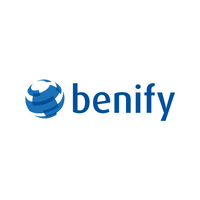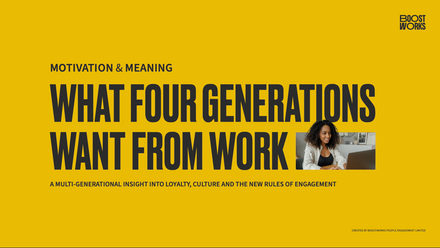Enhance your EVP roadmap via rewards and benefits
Most employees are likely to know their job description, project flow and the name of their immediate manager. They may even be able to articulate the company mission statement. But an employee value proposition (EVP) isn’t about a company’s value for the industry – it’s about value for their employees.
An EVP is a roadmap to ensuring employee engagement. It sets the tone for your workplace culture, so should offer a broader picture beyond a simple list of benefits and rewards. If a job description is a list of plot points, an EVP is the full story. This is information that will both attract candidates and empower present employees to envision what their career offers and what opportunities await.
The result? Engagement: effective investment in your people and their rewards programmes, alongside a shared vision.
5 things your EVP needs now
1. A clear mission statement
This is the explicit account of your value system, crafted to demonstrate the importance of both the company’s work and personnel.
Position your mission statement so it will be seen by employees and potential hires. Consider it the first line of a dating profile, information that could make or break a potential relationship.
CocaCola’s mission statement highlights the value of personnel and supports it with evidence. Unilever’s keeps it simple by beginning statements with ‘We are’ and ‘We believe.’
2. Highlight rewards and benefits
Rewards and benefits are investments that count among a global organisation’s highest spend, so you want to get them right and, more importantly, get the information to your employees to maximise the return on those investments.
An EVP that makes rewards and benefits clear will allow for better ROI on the highest-stakes investment a company makes: its employees. Rewards and benefits should be simple for a candidate to see during an initial engagement with a company. They should also be easy for an employee to find and for an employer to access data and insights to report on ROI back to stakeholders.
A clear presentation of benefits with easy access links to details – like educational materials, links to vendor sites, or policy docs – means less confusion and more uptake and engagement.
PwC breaks down benefits into categories that are easy to navigate, allowing both potential hires and long-term employees to see what’s available. Starbucks similarly offers an overview of their benefits and rewards.
3. Hot button issues employees are interested in
If a mission statement is evergreen, this part of an EVP will change as employee priorities change. In the post-Covid-19 workforce, these issues include remote work and vacation. Benify’s whitepaper on global benefits talks about current country-specific desires for employee rewards and benefits.
4. Different formats and multiple platforms
The first place a candidate or employee will most likely encounter your EVP is on your website. There’s no doubt a video is the most effective medium. Make sure your EVP can be viewed properly on a phone, tablet, and desktop.
Similarly, the details of an EVP shouldn’t sit on a webpage, shared drive, or in a handbook, but be communicated. Office gatherings and online presentations get the information in front of employees, but the focus should be on finding effective and agile ways to communicate information about benefits.
Information should be available and accessible. The goal of an EVP is to get as many employees as possible to take advantage of the rewards and benefits in which your company has invested.
5. Strong examples of how employees are valued
One of the most effective ways to present an EVP is to show how your rewards and benefits work for an employee’s unique needs via hyper-personalisation of their reward packages. No two individuals are the same and each employee will have unique needs. By providing diverse examples, you demonstrate to employees how rewards and benefits you offer are tailored to a value proposition that fits individual needs.
Evaluate your current programmes
Ensure that your EVP resonates with employee needs. Collecting data about which benefits are being used can reveal which programmes are most effective and where there are gaps. Evaluate data collection regularly.
A digital platform makes tracking and responding to shifting employee needs easier. Real-time data helps to identify what employees need. This allows you to pivot your EVP to keep it robust and relevant.
Put rewards and benefits at the core
An EVP is your company’s wrap-around support for employees, promoting engagement, growth, and longevity. Rewards and benefits are at its heart. If you’ve used intel and data to create a hyper-personalised rewards and benefits experience for employees, they deserve to know about it.
This is a huge investment and a risk for your company if you don’t get it right. When an employee feels the benefits of an EVP, they become an ambassador for the rewards as well as a testament to your EVP’s value.
Supplied by REBA Associate Member, Benify
Benify offers the market's leading global benefits and total reward platform.








